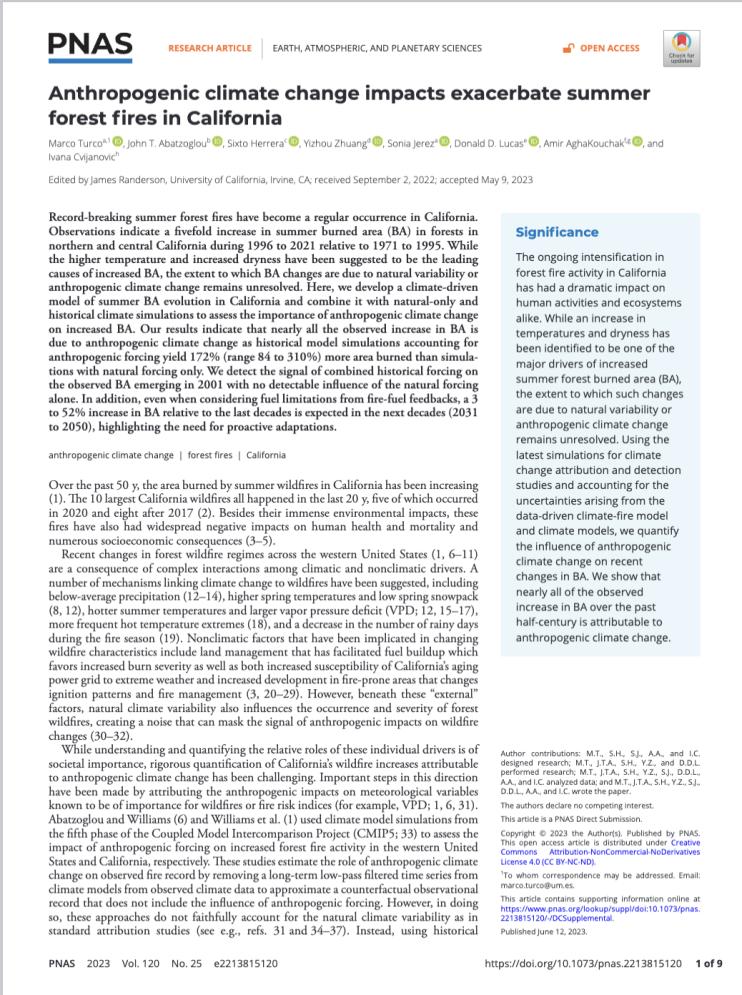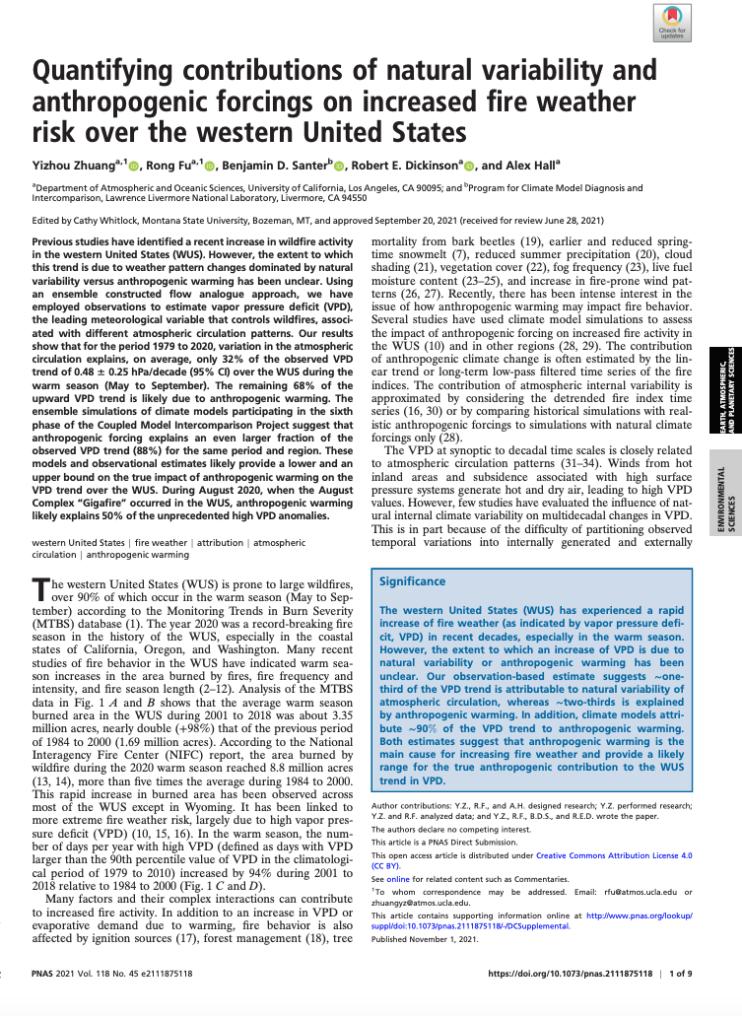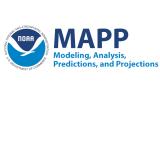Characterizing Atmosphere, Land Surface, and Fire Interactions to Improve Drought Early Warnings over the Great Plains and California

This research project proposes to characterize and understand the integral effect of the coupling between atmosphere, land surface and fire generated aerosols on drought triggers and persistence for a seasonal scale, and its interannual and decadal variability over the Great Plains and California.
These two regions consist of the first and second largest economies in the U.S., but are prone to extreme droughts. Yet, we cannot predict such droughts over a seasonal or longer time scale, including the recent extreme droughts in both regions. Statistical models based on observed persistence of the past droughts appear to provide better skill for seasonal predictions than the dynamic models in both regions. Yet, we do not fully understand the cause behind these apparent skills and whether they represent real predictability.
The project team will investigate the coupling between atmosphere, land surface/vegetation, and fires, and its impact on drought onset and persistence over the Great Plains and California with emphasis on non-local land surface feedbacks and the effects of biomass burning aerosol on clouds, rainfall, and thermodynamic stability of the atmospheric boundary layer, focusing on the following science questions:
- What large-scale anomalous circulation patterns are responsible for triggering seasonal drought memory and influence its climate variability?
- How does the coupling between drought and heat waves influence drought onsets and intensity regionally?
- Can fires intensify droughts?
This project is part of the NOAA Modeling, Analysis, Predictions, and Projections (MAAP)/NIDIS supported Drought Task Force IV.
For more information, please contact Amanda Sheffield (amanda.sheffield@noaa.gov).
Research Snapshot
What to expect from this research
- Peer-reviewed publications describing study results, as well as presentations to the scientific community. Current publications include:
- Turco, Marco, John T. Abatzoglou, Sixto Herrera, Yizhou Zhuang, Sonia Jerez, Donald D. Lucas, Amir AghaKouchak, and Ivana Cvijanovic. 2023. "Anthropogenic climate change impacts exacerbate summer forest fires in California." Earth, Atmospheric, and Planetary Sciences 120 (25), e2213815120.
- Zhuang, Yizhou, Rong Fu, Benjamin D. Santer, Robert E. Dickinson, Alex Hall. 2019. "Quantifying Contributions of Natural Variability and Anthropogenic Forcings on Increased Fire Weather Risk Over the Western United States," Earth, Atmospheric, and Planetary Sciences 118 (45).
- Through use of machine learning tools, the project team will provide a probabilistic observational characterization of the circulation patterns and associated land surface and fire conditions that contribute to droughts, and detailed process studies to understand the interplay between droughts and warm surface temperature anomalies in triggering and amplifying drought through their impacts on heat low, the low-level jets, vegetation response, and aerosols impacts on clouds and precipitation.
- Better seasonal predictions of rainfall anomalies and drought early warning information for water resources and other stakeholders in the Southern Plains and California-Nevada Drought Early Warning Systems.




